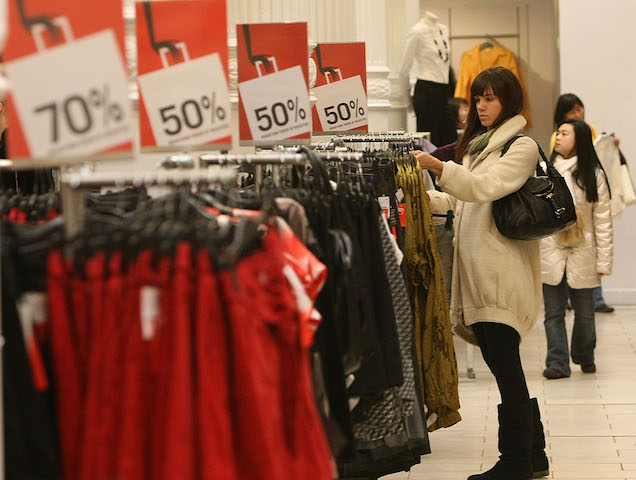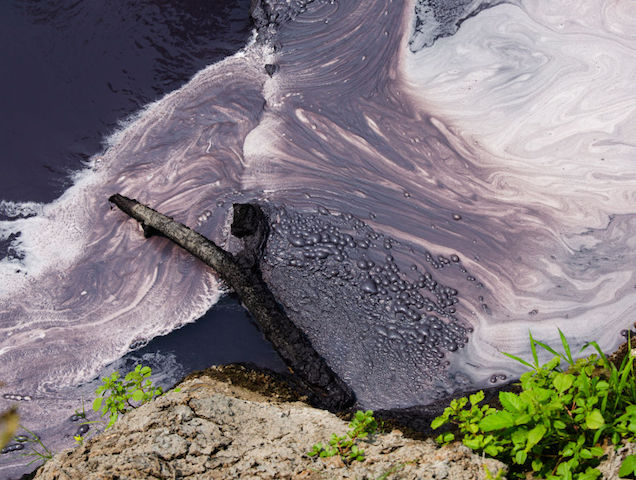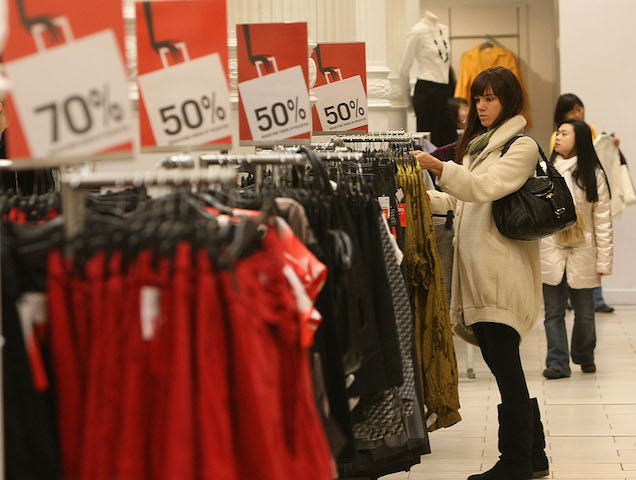The environment is a hot topic right now — literally. Global warming, plastics and pollution are being more closely examined than ever before. Scientists have been desperately urging corporations, governments and people to take global warming and environmental issues seriously in order to avoid irreversible catastrophic disasters in the near future. Leading climate scientists recently warned that we have just a dozen years left before the temperature rises to the point of significantly worsening the risks of drought, floods, extreme heat and poverty for hundreds of millions of people.

So, what does that have to do with fashion?
The fashion industry is not an exception to the negative changes happening in the environment; in fact, it is one of the most lucrative and destructive industries on Earth. It generates $1.71 trillion every year and produces over a billion clothes every year, according to Greenpeace. With global garment production set to increase by 63 percent over the next decade, this model is reaching its physical limit. Trends changing weekly, and it’s tempting to try to get in on them by purchasing a cheap iteration of a garment that can be delivered to our doors in just a few days. But how often do we stop and think about the toll our clothes and the brands we buy have on the environment?
How Much Water Does It Take to Make a Single T-Shirt?
The manufacturing process of our clothes alone creates countless environmental hazards, ranging from water pollution to air pollution to deforestation. Cotton is one of the most common materials used when creating apparel, but it is also one of the most harmful to the environment. A single cotton T-shirt needs at least 257 gallons of water to grow enough cotton to assemble the shirt.
Furthermore, cotton uses 22.5 percent of all insecticides used globally. And cotton is one of the lesser evils of clothes manufacturing. Creating synthetic fibers (polyester, acrylic, nylon, etc.) commonly found in most apparel is more energy intensive since they are made from fossil fuels and they emit more carbon.
The Invisible Way Clothes Shed Plastic
The pollution doesn’t stop during the manufacturing process, either. Half a million tons of plastic microfibers shed during washing end up in the ocean. Then there is the dyeing process, which gives our clothes color and pollutes our waters, which affects the fertility of nearby lands. An average T-shirt will use 16 to 20 liters of water in the dyeing process, which translates to 40,000 to 50,000 tons of dye leaked into the water system per year.

The next phase after production is the delivery of apparel and accessories all over the world. According to the New York Post, 1.26 billion tons of greenhouse emissions are generated every year, which is more than the amount created by international flights and shipping combined.
The Trash Created by Trends
How is it that a celebrity can wear a trend like a scrunchie and you can find them en masse at an online retailer a few days later for less than the cost of a latte? Here’s your answer: Fast fashion. Fast fashion quickly produces goods at low costs, making sure to keep up with trends that usually last less than a season. Therefore, fast fashion companies go through the environmentally damaging production and delivery process more than 50 times per year and in the end, the surplus ends up in landfills. The average American now generates 82 pounds of textile waste each year. That adds up to more than 11 million tons of textile waste from the U.S. alone.
A fast fashion brand in the news over the past few years due to its environmental issues is H&M. The company was first brought to light about its less than eco-friendly practices in 2010 when it was accused of destroying, cutting up and dumping unsold clothes in Manhattan. Just late last year, the company was accused of destroying 60 tons of recyclable garments. The brand defended itself by saying the incineration had to be done due to safety measures. In March, H&M had to face the music regarding $4.3 billion dollars of unsold clothes that resulted in major flash sales at all of its stores all over the world. On the one hand, the sales were a good way to deal with surplus, but on the other hand, it was evidence that H&M had accumulated an extreme surplus of extra clothing and still continued to produce more.
What Can Be Done?
Despite the stir H&M created regarding its environmental ethics, they’re looking to right their wrong, and Greenpeace names them as one of the top fashion companies in its The Detox Catwalk campaign. The campaign pushes fashion companies to eradicate the use of harmful chemicals, such as alkylphenol ethoxylates (APEOs), phthalates and perfluorinated chemicals (PFCs), which pollute waterways. The campaign already has 76 major international brands, retailers and suppliers under its watch and because of that, policy changes implemented by governments have been made in Europe and Asia. Fashion brands, in particular, can play an important role in transforming the sector because of the influence they have on suppliers and trends.
The top fashion brands joining H&M are:
- Adidas
- United Colors of Benetton
- Burberry
- C&A
- Esprit
- G-Star Raw
- Inditex (includes Zara)
- Levi Strauss & Co.
- Limited Brands
- Mango
- Marks & Spencer
- Primark
- Puma
- Fast Retailing (includes Uniqlo)
- Valentino
The Detox Catwalk has a goal for fashion companies to stop using the aforementioned chemicals by 2020. Despite numerous brands following suit, there have been companies that still refuse to succumb to the campaign:
- Giorgio Armani
- Bestseller
- Only the Brave (includes Diesel and Viktor & Rolf)
- Dolce & Gabbana
- Gap Inc.
- Hermes
- LVMH (includes Louis Vuitton, Marc Jacobs and Christian Dior)
- Metersbonwe
- PVH (includes Calvin Klein and Tommy Hilfiger)
- Vancl
- Versace
These small steps are making a difference, but a change must be made in the entire fashion industry by implementing stricter policies on manufacturing and delivery. Finding alternatives to harmful materials and slowing down the fashion cycle is a small price to pay for a healthier environment.
So what course of action can an individual take? It may be a cliché, but put your money where your mouth is. Research brands that implement strict manufacturing policies. Check the company’s background and the materials it uses. Confront companies about their environmental ethics through social media, a route that has led campaigns to increase plus-size clothing options and encouraged more diversity in fashion shows.
Finally, think about how you view the durability of clothing. Clothes are not meant to be worn once and discarded. Invest in something versatile you can wear over and over again rather than the latest trend. Donate the clothes you don’t want or need. Use your power as an individual — companies still depend on the consumer to signal what their next step should be.







